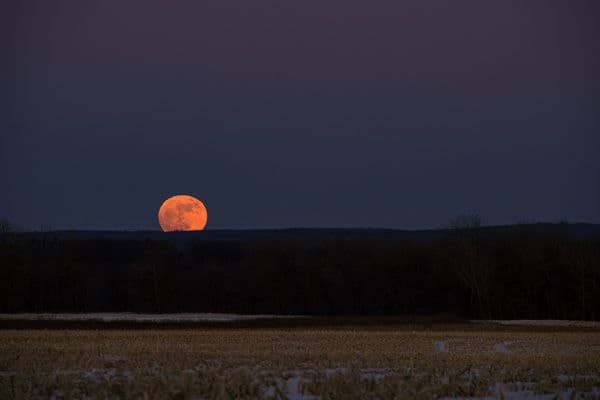
What’s better than a supermoon? A blood moon, wolf moon supermoon, of course, and there’s a good one right around the corner coming in January 2019.
The astronomical wonder is set for the evening of Jan. 20-21, and will be visible across North America, weather permitting. A total lunar eclipse begins on Sunday the 20th at 11:41 p.m. Eastern Standard Time, and totality continues for more than an hour until 12:43 a.m. on Monday the 21st.
Moonrise is at 5:28 p.m. in Boston on Jan. 20 and 5:35 p.m. in Springfield, Massachusetts, so the moon will be well above the horizon and should be easy to see wherever you are. Weather permitting.
A total lunar eclipse is the blood moon part of this event — the term “blood moon” deriving from the reddish hue the moon takes on during an eclipse.
As for why it’s a supermoon: At the time of the event, the moon will be very close to perigee, its closest approach to Earth during its monthly orbit. When a full moon occurs at or near perigee, it gets supermoon status. The moon’s average distance from Earth is about 238,000 miles. Perigee on this orbit occurs Jan. 21 at 2:59 p.m. EST at 222,042 miles.
And wolf moon? Ancient cultures gave full moons names based on the time of year. According to the Old Farmer’s Almanac, “Amid the cold and deep snows of midwinter, the wolf packs howled hungrily outside Indian villages. Thus, the name for January’s full Moon.”
And kids, if you aren’t allowed to stay up until totality begins, maybe you can see the beginning of the umbral eclipse at 10:33. That’s when the Earth’s full shadow begins passing over the moon. But do what you can to get the OK to stay up — there won’t be another total lunar eclipse until May 26, 2021.























